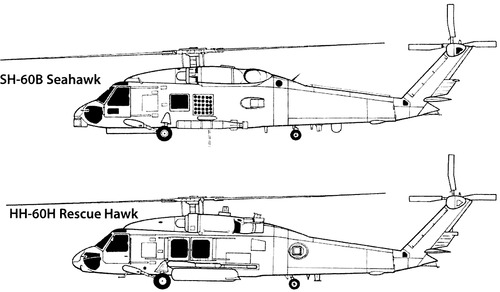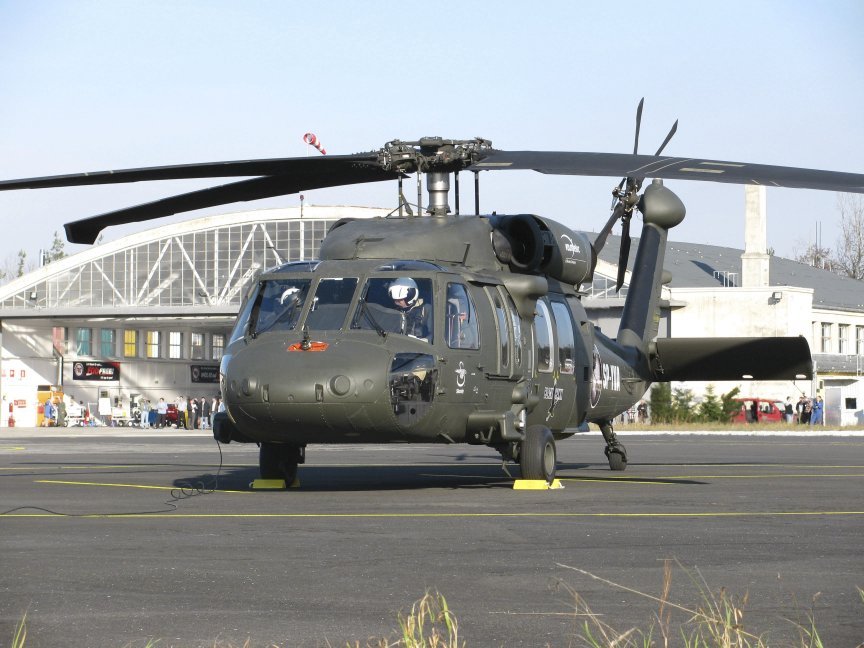Why the Sikorsky S 70 is the Preferred Option for Modern Helicopter Missions
Why the Sikorsky S 70 is the Preferred Option for Modern Helicopter Missions
Blog Article
High-Performance Multi-Role Rotorcraft Featuring Advanced Cockpit Technologies and Integrated Sensor Equipments
The realm of rotorcraft modern technology has actually seen significant innovations in current times, especially in the world of high-performance multi-role rotorcraft outfitted with cutting-edge cockpit innovations and seamlessly incorporated sensor systems. These innovations have not just boosted the operational abilities of rotorcraft but have actually additionally significantly impacted modern aviation operations on numerous fronts. From improved mission versatility to boosted operational efficiency, the merging of advanced cockpit modern technologies and incorporated sensor systems has introduced a brand-new age of opportunities for rotorcraft applications. In the complying with discussion, we will check out the evolution of rotorcraft technology, look into the world of sophisticated cockpit developments, and examine the effects of incorporated sensing unit systems on the functional versatility and effectiveness of modern-day rotorcraft.
Development of Rotorcraft Modern Technology
The advancement of rotorcraft modern technology has actually been noted by considerable improvements in aerodynamics, materials, and propulsion systems, forming the abilities and performance of modern-day rotorcraft. Additionally, advancements in propulsion systems, consisting of extra effective engines and cutting-edge propulsion modern technologies, have made it possible for rotorcraft to attain higher altitudes, faster speeds, and greater payloads.
These innovations have not just transformed the abilities of rotorcraft but have actually also broadened their applications across numerous sectors, consisting of army, industrial, and emergency situation services. The constant development of rotorcraft modern technology remains to drive advancement in the area, pushing the borders of what is feasible and shaping the future of vertical flight.
Advanced Cabin Innovations
Building upon the foundational developments in aerodynamics, materials, and propulsion systems, the realm of rotorcraft innovation currently changes focus in the direction of pioneering Advanced Cabin Innovations. The combination of innovative modern technologies within the cockpit atmosphere plays an essential duty in improving the functional capacities, safety, and performance of modern rotorcraft. sikorsky s 70. Advanced Cockpit Innovations incorporate a vast variety of functions designed to supply pilots with enhanced situational understanding, streamlined data administration, and intuitive control user interfaces
One of the vital developments in cabin layout is the execution of glass cabins, which change conventional analog gauges with high-resolution displays. These digital systems supply customizable layouts, real-time data assimilation, and boosted readability, enabling pilots to access crucial details at a look. Additionally, progressed avionics systems, such as fly-by-wire controls and enhanced fact screens, are revolutionizing exactly how pilots interact with the airplane, allowing for precise control and boosted decision-making capabilities.


Integrating sophisticated cockpit advancements not only improves pilot performance yet likewise adds to overall mission performance and safety and security in intricate operational atmospheres. By leveraging state-of-the-art technologies within the cabin, rotorcraft suppliers are establishing brand-new criteria for operational excellence and goal success.
Integrated Sensor Solutions
With the evolution of rotorcraft modern technology, the integration of innovative Integrated Sensing unit Systems has actually come to be extremely important in enhancing functional efficiency and safety. These Integrated Sensor Equipments include a wide range of technologies that offer crucial data for various functions such as navigating, security, targeting, and top article ecological surveillance. By flawlessly incorporating sensors like radars, electronic cameras, lidar, and infrared systems into rotorcraft, drivers can profit from boosted situational awareness, boosted objective capabilities, and decreased pilot workload.
One secret benefit of Integrated Sensor Systems is their capability to collect real-time data and offer actionable insights to pilots and goal drivers. Advanced radar systems can detect and track targets over long see this site ranges, permitting for early risk detection and effective response preparation. In addition, integrating infrared and electro-optical cameras enables rotorcraft to perform reconnaissance and security goals with precision and precision.
Fundamentally, the combination of innovative sensing unit technologies into rotorcraft not only enhances functional performance yet likewise adds dramatically to total goal success and crew safety and security. As rotorcraft remain to evolve, the role of Integrated Sensing unit Equipment will undoubtedly continue to be at the leading edge of development in the aerospace sector.
Functional Adaptability and Efficiency
Enhancing functional adaptability and efficiency in rotorcraft is an all-natural progression from the assimilation of advanced Integrated Sensor Equipments. By leveraging the understandings and information supplied by these sophisticated sensor systems, rotorcraft can maximize their efficiency across various goals and atmospheres.
Operational versatility incorporates the ability of rotorcraft to adapt to different functions and situations effectively. With innovative cabin innovations and incorporated sensor systems, rotorcraft can flawlessly shift in between tasks such as search and rescue, medical evacuation, security, and extra. This adaptability boosts the rotorcraft's capability to meet diverse functional requirements without calling for considerable reconfiguration.
Performance in rotorcraft procedures is important for optimizing mission performance and resource usage. Integrated sensor systems play a pivotal role in enhancing functional performance by supplying real-time information on weather condition conditions, terrain mapping, target monitoring, and extra. This information makes it possible for pilots to make enlightened decisions quickly, optimize flight paths, save fuel, and enhance general mission productivity.
Effect On Modern Air Travel Operations

Moreover, the assimilation of advanced sensing units assists in enhanced objective preparation and implementation, enabling rotorcraft to perform a wide variety of tasks with imp source improved accuracy. From search and rescue procedures to aerial firefighting and regulation enforcement missions, the capacities of modern-day rotorcraft geared up with sophisticated cockpit innovations and integrated sensor systems are unmatched.
In addition, the effect of these improvements expands past operational performance to cost-effectiveness and sustainability. By maximizing trip routes, fuel usage, and maintenance routines, high-performance rotorcraft furnished with advanced cabin technologies and sensing units contribute to decreasing functional prices and environmental effect, making them important possessions in modern air travel procedures.
Final Thought
Finally, the high-performance multi-role rotorcraft with advanced cockpit technologies and integrated sensor systems represents a considerable evolution in aeronautics modern technology. These innovations enhance functional flexibility and effectiveness, ultimately influencing modern air travel operations in a favorable way. The integration of these innovative innovations permits enhanced capabilities and efficiency in numerous goal situations, showcasing the continued development of rotorcraft innovation in the air travel sector.
The realm of rotorcraft technology has actually seen significant developments in current times, especially in the world of high-performance multi-role rotorcraft geared up with cutting-edge cockpit modern technologies and effortlessly incorporated sensor systems. From boosted objective versatility to enhanced functional efficiency, the merging of advanced cabin innovations and integrated sensing unit systems has ushered in a new age of possibilities for rotorcraft applications. In the complying with discussion, we will discover the evolution of rotorcraft modern technology, dig into the world of innovative cockpit developments, and analyze the effects of integrated sensor systems on the functional convenience and performance of modern-day rotorcraft.

Report this page